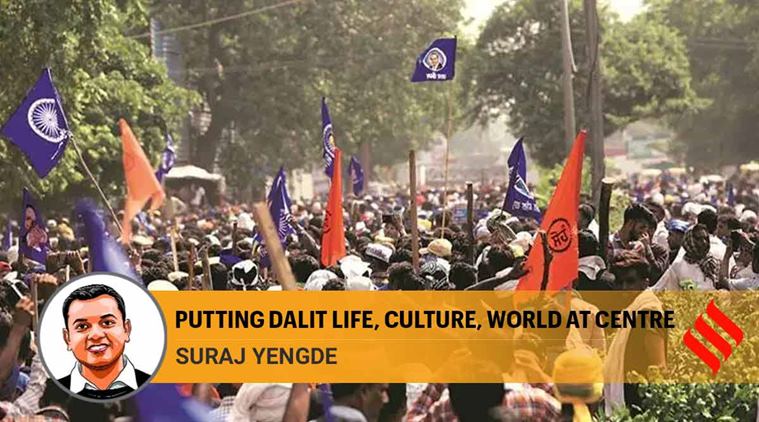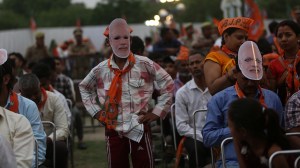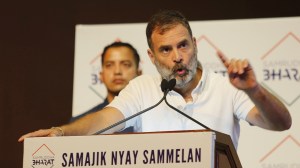- India
- International
Creation and innovation sit at the crux of Dalits’ secret to survival
Taking a stab at his first ever journalistic piece, Babasaheb Ambedkar lamented the recklessness of newspapers in manhandling Dalit issues.
 At the protest by Dalit groups on August 21 in the capital.
At the protest by Dalit groups on August 21 in the capital.
This is our time. I want us to believe in the fate of history and its important effort in shaping our lives. The uncompromising work of the great people that remained stead in the midst of callous atrocities and unrelenting attacks on their dignity and stature has much to offer to our burnt souls. The times that we are bearing witness to is an assault on that hope. I want us to look at the most vulnerable bodies living in these pessimist times.
Lend an ear and pay attention to the musical whispers of those people who are warned not to cross the lines and remain in one’s place like a permanently fixed graveyard. Involve your sweat in appreciating the sweet lives as these men and women, children and older people motion.
It is not a call to charitable everybody. It is an invocation rooted in provocation of the masses that are most causal and yet deliberately manhandled by the feared oppressor — the privileged.
The child who is unaware about the totems of society yearns for the impossible and holds on to the curiosity deeply held within her bloodstream, inherited from her heroic ancestors. As soon as reason enters the infant’s brain, a heavy brick of caste is slapped on her fragile head, jetting the blood all over the innocent child’s face. Divya, a nine-month old infant, and her elder brother of two, Vaibhav, were burnt to ashes by the cowardly hyenas of the Rajput community in Ballabhgarh (https://www.deccanherald.com/content/507466/2-dalit-kids-burnt-alive.html) of Haryana state.
We will take on these issues and many others, that is hoped will set alight the fire of humanitarianism fazed in the oppression of everyone.

Through this fortnightly column we aim to achieve what our ancestors so honestly bequeathed — to be brutally honest in truth-telling. We will simply tell the truth and nourish the altruistic character of pensive Dalitness.
Taking a stab at his first ever journalistic piece, Babasaheb Ambedkar lamented the recklessness of newspapers in manhandling Dalit issues. In his editorial written for the Bahishkrut Bharat on January 31, 1920, Ambedkar called out newspapers for holding their caste interests closer, thereby limiting the space for Dalit issues. Reflecting today, after 100 years, it appears no different. Ambedkar continued that it was important to create an independent space for Dalits in the national discourse.
We would like to sit in the same tradition and contribute excellence to demonstrate the gifted abilities we hold together as a proud community. Since caste relies on pollution, we would like to walk into hackneyed spaces dominated by mono-castes and exhale a breath of fresh air, eliminating the odour of casteism. We will purify the unwelcoming spaces with the antidote of love and tenderness.
The Dalits are ready and, armed with sophistication, they will grant life to the dying art of journalism.
Everyone coming under this shield will be granted life-long worth of work commitment towards emancipation from our despicable selves. For our despicable selves are trapped in the notions of prejudice and uncare. We will subvert and bring a common humanity to parlance. We believe in the humanity of all to the core. We refuse to give hatred and anger the last word. For the last word always will be of radical love — un-bended and unfiltered, raw and fleshy.
This column hopes to be the voice of the unheard, unfused to the candour of appropriation. It will use this space to critically look at the grammars of the oppressive caste world.
In the times when media has crossed the morals of ethical businessmenship — if there exists such — we aim to create a launching pad to direct the attack at the same institutions which thrive on mediocre savarna merit. The gilded age of Indian media is being written in our presence for the wrong reasons. Rather than being critical of power, the media has chosen to sleep with the powers, performing all the asanas mentioned in the Kamasutra. Plutocracy is the lingua franca of current India when 24X7 cacophony is hitting a new low. Journalists are difficult to find these days. Ramp-walking, limelight-seeking desperate hordes of insatiate souls are overpowering the journalist fraternity without deterrence.
Either way, the conservative and progressive individuals in the media empire find Dalits an issue of mild concern, tossing Dalits into a limited enigma of Dalit death reports. As if the media thrives on Dalit assassination.
Dalit Freedom Movement
The Dalit Freedom Movement is to materialise emotions of freedom into concrete action. We need to acknowledge the quality and temerity of the Dalit freedom fighters who are fighting a battle against casteism, capitalism, sexism, homophobia, xenophobia, and all forms of structural inequalities, to establish an organic society deeply tied to uplifting the free voice of everybody.
In the Dalit Freedom Movement, Dalit art and Dalit culture sit at the foundation of dismantling hierarchy. Art provides a space to challenge and nurture humanity valued through one’s existence, and not performance in the already unjust society.
We will put Dalit life, Dalit culture and Dalit world right at the centre, as all the savarna minorities flaunt it with pride. Based on the principle of equality and fairness, the readers will get equal opportunity to dive into the lives of Dalits and get educated.
This column is a modest start, yet unbridled by its audacity to hope more. We want to be ruthless in our criticisms of a system that should have gone by now. We want to be militant in our thoughts and in moral action, that warrants an immediate fixture of the problems that are heaped on our generations. It hopes to be a rallying cry for the new masses, galvanising the struggle of its identities in a society heavily policed by one’s non-belonging.
The conversation began a year and a half ago. We discussed about the various possibilities to make it work. After a series of discussions, I asked for a page in the newspaper that would account for Dalit and Adivasi stories (a quarter of the Indian population). I was told in a mild tone, “Let’s begin with a column first and then expand”.
I accepted with a determination to make it grow.
Let this space be a cultural outpost for bringing high-brow interactions and unrecognised but equally powerful metaphors of a rich culture. Arts, education, literature, academic, and modern forms of nu-genres that Dalits are inventing, in the urban shanties of overcrowded smoky cities to rural segregated huts. Creation and innovation sit at the crux of Dalits’ secret to survival. The fortnightly column will have an experimental outlook. It will invite new voices to help us think collectively about issues of rational concern.
This space is aimed at philosophising the ontological and epistemological concerns of the Dalit stream. The origin of one’s cry is to inject the warranted claims of human dignity. I want to create a new generation of writers and encourage the existing ones to risk breaking the barriers and to take a leap of faith in their own qualities.
(This article first appeared in the print edition on September 22, 2019 under the title ‘Putting Dalit life, culture, world at centre’. Suraj Yengde, author of bestseller Caste Matters, is a postdoctoral fellow at Harvard Kennedy School and a recipient of the ‘Rohith Vemula Memorial Scholar Award’Yengde will curate the fortnightly ‘Dalitality’ column, starting today. He is available on @surajyengde)
EXPRESS OPINION
Apr 24: Latest News
- 01
- 02
- 03
- 04
- 05










































